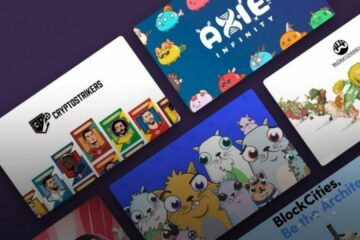When non-fungible tokens, or NFTs first gained public attention a few months ago, few understood what they were and what they were used for. Today they are a booming market, selling for thousands and even millions of dollars each. In February, sales of NFT tokens reached $ 500 million, twice as many as throughout 2020. According to the Crypto Art website more than 191,000 digital art items have already been sold for a total greater than to $ 533 million.
The distinguishing feature of NFTs is that their underlying technology certifies and guarantees the authenticity of an attached item, which increases its value. Today, world stars use their paintings, songs, and even Twitter posts to protect their copyrights, while collectors can purchase a Picasso painting without leaving their homes or worrying about it being of a fake.
The values of the deals may surprise even veterans of the auction houses – a painting for $ 69 million a Twitter post for $ 2.9 million. NFT promises to revolutionize the world of digital art.
Make a fortune by selling virtual paintings
not necessarily hung on a wall. Rather, it allows an unlimited number of items in a collection. In February, a short animated video by American digital artist Beeple depicting an image of a naked Donald Trump was sold for $ 6.6 million. Four months earlier, it was on sale for just $ 67,000.
Due to their inclusion in some of the larger auction houses, like Christie’s and Sotheby’s, digital images are sold with the same demand as the classics. Christie’s recently sold another Beeple NFT – a collage of thousands of images he created daily for years – to a Singapore-based crypto investor who paid $ 69.3 million.
Sotheby’s, meanwhile, began collaborating with an artist known as Pak who was auctioning an NFT-format work called “Metarift” on Makersplace. On March 19, an NFT art collector dubbed 888 offered to buy the painting for $ 888,888. A day later, another buyer by the nickname Danny raised the offer to $ 904,413.
Where to buy NFT art
Auctions specializing directly in virtual art already exist. Works by Pak, Mad Dog Jones, Micah Johnson and others are currently sold daily for record values. These platforms help artists not only to sell works but also to protect paintings with digital signatures i.e. NFTs. Christie vice president Xin Li-Cohen, for example, co-founded the nascent market platform TR Lab.
NFT artist Chris Torres explains how crypto art opens up opportunities for artists that weren’t available before, saying, “The creator originally owns it, and then he can sell it and monetize it directly, and be recognized for their work. ”
Li-Cohen, who has run the Christie’s auction house since 2010, recently joined a dedicated production team to work with artists and help them publish digital artwork in the NFT format. An additional concierge service was also hired to initiate and support communities and collectors throughout their customer journey through the innovative digital collectibles market.
Museums are also switching from physical to digital exhibits, meaning that a Picasso painting on display in the Louvre can now be owned by a private collector, while still leaving the original in the museum for millions of people to enjoy. .
The company is slowly making the transition from physical media to fully virtual experiences, with the younger generation already accustomed to holding digital collectibles as a store of value. NFTs can also help revolutionize copyright control, as radio stations can use tokens to secure broadcast rights to music tracks, while streaming services may find it easier to buy. rights to films and television series.
Operations with NFT tokens are cheaper, easier and faster than with the real objects to which they are attached. Considering the applications of NFTs and the forecasts made on the basis of existing statistics and market sales data, 2021 is shaping up to be an important milestone in the development of this digitized trend.
What are NFTs?
NFTs, Non-Fungible tokens in English and non-fungible tokens (non-exchangeable) in French, work on the same principle as cryptocurrencies. They are based on the Ethereum blockchain, but the TRON cryptocurrency is also trying to invest in the industry.
These tokens are used to authenticate images, or any object on the Internet. To use the example used in The Verge article, you are free to download images from Monet’s La Promenade canvas, but there is only one original. An NFT can be used to certify that you do have the original Monet, or in our case, the very first tweet in the world.
Concretely, what is it for?
NFTs allow you to potentially authenticate anything you create on the Internet. So far, Internet users have mainly used this technology to sell their certified creations, and therefore to create a kind of virtual art market. It was this market that grabbed the headlines recently, and immediately created a speculative bubble.
It is also the emergence of this market which pushes more and more artists and creators to put on sale their works thanks to the NFTs: the prospect of them being bought for thousands of dollars by collectors is tempting, d ‘especially since the process is relatively simple, and free. You can do this on the NiftyGateway site by filling out a few questions and putting a link to your portfolio of creations.
Note, however, that not everyone is accepted: Nifty Gateway teams do not allow everyone to turn their tweets into works of art. First, there needs to be a “hook” for a team member to contact you. “Due to the high volume of inquiries, we cannot guarantee that we will be able to respond to you,” warns NiftyGateway.
But, what could motivate someone to pay tens of thousands of dollars for a Dogecoin Nyancat gif? More or less the same reasons that some people are interested in the art market and are willing to pay a fortune for paintings: speculation, and being able to say that you have a unique piece. In the case of a meme, we grant you, the artistic interest may seem obscure. But after all, what is art? You have four hours.
What impact do NFTs have on the Internet?
Of course, the art world is only a very small part of what NFTs could change on the Internet. The NFT authentication mechanism will globally impact the notion of digital property, as the Ethereum site notes.
NTFs could be used to prove ownership of domain names, for video game items, but also physical objects. A limited edition of sneakers already use NFTs to prove their authenticity, and the Kings of Leon Group sells a collection of “NFT Yourself” items, payable in Ethereum. The creators of the cryptocurrency also insist that these tokens could, in the future, be used as collateral for bank loans. If, as the Ethereum teams imagine, ownership of NFTs is identified and easily searchable in the future, there would be few limits to their uses.
In this whole story, we also have to worry about the consequences on nature. Cryptocurrencies have a real impact in terms of carbon footprints: their creation (mining, in English) requires a lot of energy and emits a lot of heat. The creators of Ethereum, however, want to reassure potential artists or buyers of tecktonik gifs: NFTs do not increase the carbon footprint of cryptocurrency. You can buy with a clear conscience.



0 Comments